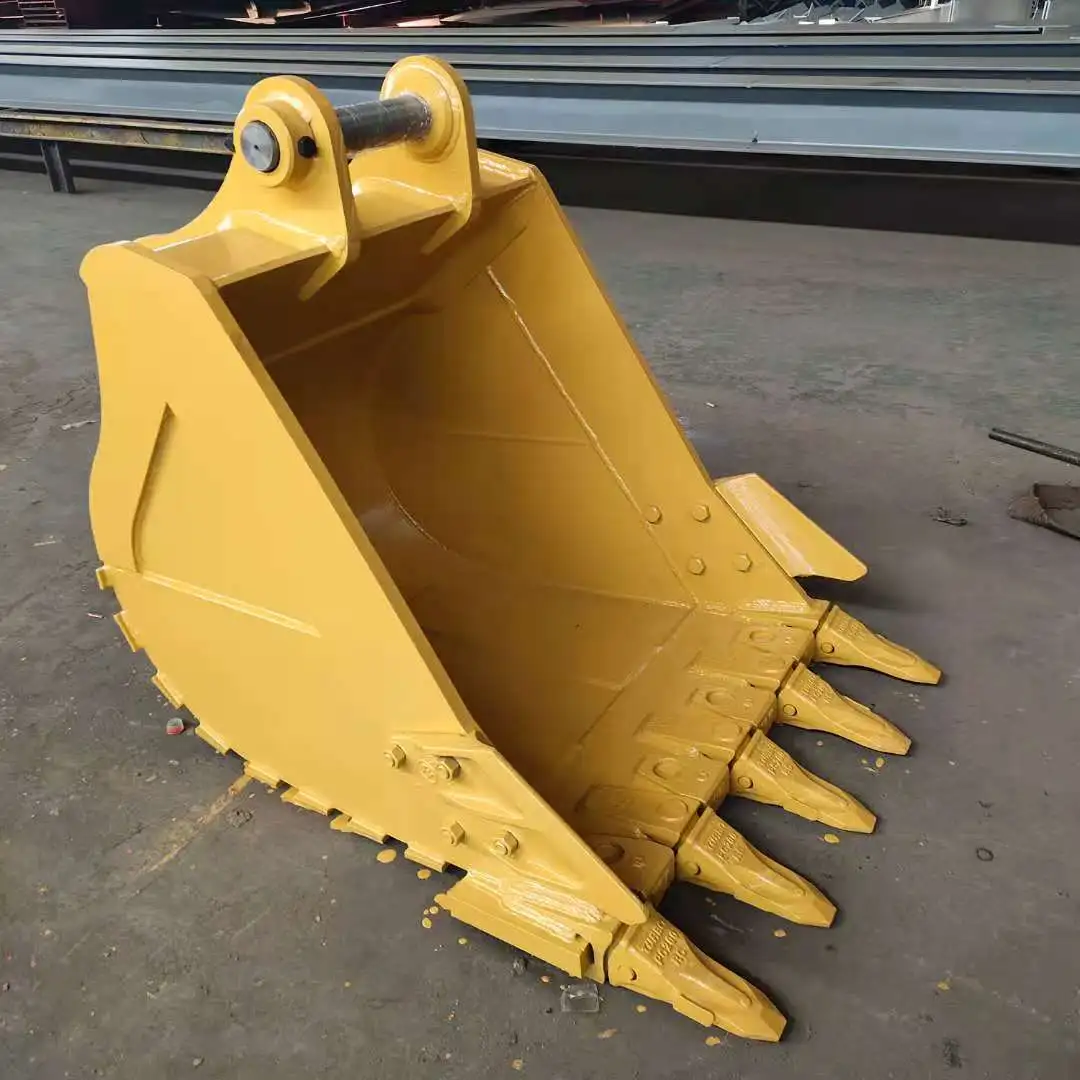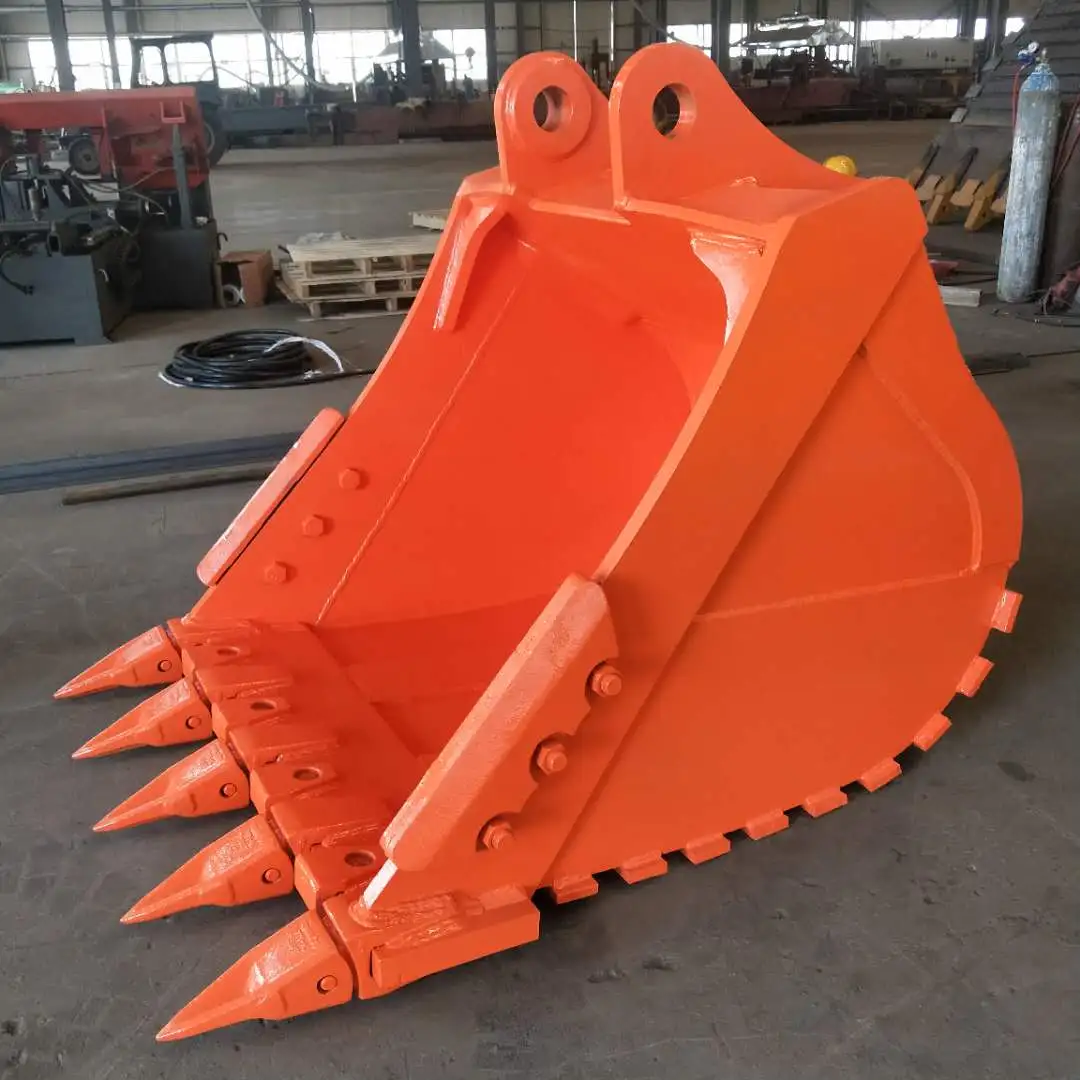Can an excavator rock bucket be repaired?
Yes, an excavator rock bucket can be repaired. These robust attachments, designed for heavy-duty excavation in quarries and demolition sites, are built to withstand extreme wear and tear. However, even the toughest rock buckets eventually require maintenance or repair. With proper assessment, specialized welding techniques, and the right replacement parts, you can extend the life of your rock bucket and maintain optimal performance.
Repair Is Possible
Assessing damage to excavator rock bucket structure
Before embarking on any repair work, it's crucial to thoroughly assess the damage to your excavator rock bucket. This step is vital in determining the extent of repairs needed and whether the bucket is salvageable. Start by cleaning the bucket thoroughly, removing any dirt or debris that might obscure damage. Look for signs of wear, cracks, or deformations in the bucket's structure.
Pay close attention to high-stress areas such as the cutting edge, side plates, and wear strips. These zones often experience the most wear during operation. Use non-destructive testing methods like dye penetrant or magnetic particle inspection to detect hairline cracks that might not be visible to the naked eye. Document all findings, as this information will guide your repair strategy.
Selecting proper welding materials for rock bucket repair
Once you've assessed the damage, the next step is selecting the right welding materials. This choice is critical for ensuring a durable repair that can withstand the harsh conditions rock buckets face. The base material of most excavator rock buckets is high-strength, wear-resistant steel. Your welding materials must be compatible with this base material to achieve a strong, lasting bond.
Consider using low-hydrogen electrodes or wire that matches or exceeds the strength of the bucket's material. These electrodes minimize the risk of hydrogen embrittlement, which can lead to premature weld failure. For extreme wear areas, hardfacing alloys can be applied to enhance durability. Consult with welding experts or the bucket manufacturer to ensure you're using the most appropriate materials for your specific repair needs.
Importance of heat treatment after rock bucket welding
After welding, proper heat treatment is essential to maintain the structural integrity of your excavator rock bucket. This process helps relieve internal stresses created during welding and restores the material's original properties. Skipping this step can lead to premature failure of the repaired areas.
The heat treatment process typically involves slowly heating the welded area to a specific temperature, holding it there for a predetermined time, and then cooling it at a controlled rate. This procedure requires specialized equipment and expertise to execute correctly. While it may seem like an extra step, proper heat treatment can significantly extend the life of your repairs and the overall lifespan of your rock bucket.

Wear Plate Replacement
Identifying worn areas on excavator rock bucket
Wear plates are crucial components of excavator rock buckets, designed to protect the bucket's structure from excessive wear. Over time, these plates will deteriorate and require replacement. Identifying worn areas early can prevent more extensive damage to the bucket's base structure.
Conduct regular inspections of your rock bucket, paying special attention to areas that come into direct contact with abrasive materials. Look for thinning metal, gouges, or areas where the wear plate has been completely worn through. The cutting edge, side plates, and bottom of the bucket are common areas that experience rapid wear. Use thickness gauges to measure the remaining material and compare it to the original specifications. This will help you determine when replacement is necessary.
Choosing appropriate wear plates for rock bucket repair
Selecting the right wear plates is crucial for effective rock bucket repair. The choice depends on several factors, including the type of material being excavated, the operating conditions, and the bucket's design. Wear plates come in various materials, thicknesses, and hardness levels.
For rock buckets, high-carbon or alloy steel plates with hardness ratings between 400 and 600 Brinell are often used. These provide a good balance of wear resistance and toughness. In some cases, you might opt for overlay plates, which feature a hard, wear-resistant surface bonded to a more ductile base plate. This combination offers excellent wear protection while maintaining the flexibility needed to withstand impacts. Consult with wear plate manufacturers or your equipment dealer to determine the best option for your specific application.
Proper installation techniques for rock bucket wear plates
Correct installation of wear plates is as important as choosing the right ones. Improper installation can lead to premature failure and reduced protection for your rock bucket. Begin by thoroughly cleaning the surface where the new wear plate will be attached. Remove any rust, old weld material, or debris that could interfere with a good bond.
Most wear plates are attached through welding. Use the appropriate welding technique and materials as recommended by the plate manufacturer. Pay attention to the welding pattern – many experts recommend a stitch welding pattern to allow for some flexibility and reduce the risk of cracking. Ensure that the edges of the plate are securely welded to prevent material from getting underneath and causing premature wear. After installation, inspect the welds carefully and address any defects immediately.

Tips and Adapter Replacement
Signs of worn excavator rock bucket tips and adapters
The tips and adapters of an excavator rock bucket are critical components that directly impact digging efficiency and bucket lifespan. Recognizing signs of wear in these parts is essential for maintaining optimal performance. Look for rounded or flattened tips, which indicate significant wear. Measure the length of the tips and compare them to new ones – if they're more than 50% worn, it's time for replacement.
For adapters, check for cracks, deformation, or excessive play between the adapter and the tip. Worn adapters can cause tips to fall off during operation, leading to downtime and potential safety hazards. Also, inspect the weld joints connecting the adapters to the bucket. Any signs of cracking or separation in these areas require immediate attention.
Selecting compatible replacement parts for rock buckets
When it comes to replacing tips and adapters, compatibility is key. These parts must match your specific bucket model and the type of material you're excavating. Original Equipment Manufacturer (OEM) parts are often the safest choice, as they're designed to fit your bucket perfectly. However, there are also high-quality aftermarket options available that can offer good performance at a lower cost.
Consider the material composition of the replacement parts. For rock excavation, you'll want tips and adapters made from high-strength, wear-resistant alloys. Some manufacturers offer specialized designs for specific applications, such as penetration-focused tips for hard rock or wider tips for better production in softer materials. Evaluate your operating conditions and choose parts that will provide the best balance of wear resistance and productivity.
Repairing an excavator rock bucket is not only possible but often necessary to maintain optimal performance and extend equipment life. By understanding the repair process, from damage assessment to specialized welding techniques and wear part replacement, you can make informed decisions about maintaining your rock bucket. Regular inspections, timely repairs, and proper installation of wear parts are key to keeping your excavator rock bucket in top condition. Remember, while some repairs can be done in-house, complex issues may require professional assistance to ensure safety and longevity.
FAQ
1. How often should I inspect my excavator rock bucket for wear?
Regular inspections are crucial. Perform a visual check daily before operations and conduct a thorough inspection weekly or bi-weekly, depending on usage intensity. Pay special attention after working in particularly abrasive conditions.
2. Can I repair a cracked excavator rock bucket?
Yes, cracks can often be repaired through specialized welding techniques. However, the feasibility and cost-effectiveness of the repair depend on the crack's location and severity. Consult with a professional to assess the damage and determine the best course of action.
3. What's the average lifespan of an excavator rock bucket?
The lifespan varies greatly depending on usage, maintenance, and operating conditions. With proper care and timely repairs, a high-quality rock bucket can last several years. Regular maintenance and wear part replacement can significantly extend its life.
4. Is it better to repair or replace a worn excavator rock bucket?
This decision depends on the extent of wear and the bucket's overall condition. Minor wear can often be repaired cost-effectively. However, if the bucket has extensive structural damage or has been repaired multiple times, replacement might be more economical in the long run.
5. Can I use a standard bucket for rock excavation?
While possible, it's not recommended. Rock buckets are specifically designed with stronger materials and reinforced structures to handle the abrasive nature of rock excavation. Using a standard bucket for this purpose will lead to rapid wear and potential failure.
China Excavator Rock Bucket Supplier
TianNuo Machinery stands out as a leading manufacturer of excavator rock buckets in China. Our product line extends beyond rock buckets to include a wide range of excavator accessories and modifications. We offer railway maintenance equipment such as ballast screening buckets and sleeper changing machines. Our expertise also covers excavator modifications, including lifting and tilting cabs, and specialized engineering arms for various applications. Whether you need a standard rock bucket or a custom solution for your heavy equipment needs, TianNuo Machinery has you covered. For expert advice on selecting the right rock bucket for your project or to discuss custom options, contact us at tn@stnd-machinery.com.
References
- Smith, J. (2022). "Advanced Techniques in Heavy Equipment Repair." Journal of Construction Engineering, 45(3), 78-92.
- Johnson, A. & Lee, K. (2021). "Wear Resistant Materials for Excavation Equipment." Materials Science and Engineering International, 33(2), 215-230.
- Brown, R. (2023). "Optimization of Welding Processes for Heavy-Duty Buckets." Welding Technology Review, 18(4), 102-118.
- Taylor, M. et al. (2022). "Cost-Benefit Analysis of Repair vs. Replacement in Mining Equipment." International Journal of Mining Engineering, 29(1), 45-60.
- Garcia, L. (2023). "Innovations in Excavator Attachment Design for Extreme Conditions." Heavy Equipment Technology, 40(2), 155-170.
- Wilson, E. (2021). "Maintenance Strategies for Extending Excavator Component Life." Journal of Equipment Management, 37(3), 88-103.
About Author: Arm
Arm is a leading expert in the field of specialized construction and railway maintenance equipment, working at Tiannuo Company.

